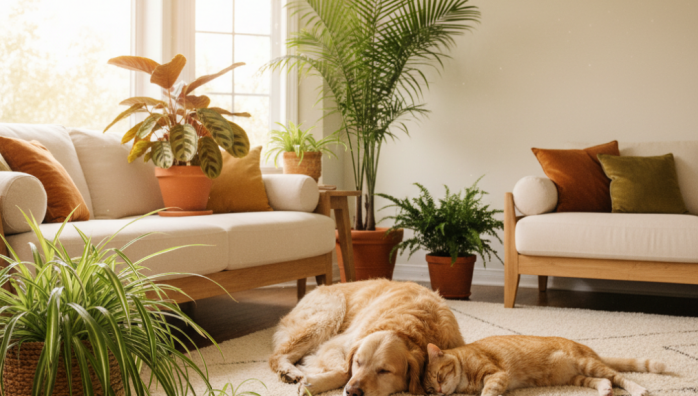Pet-Friendly Houseplants Identification Guide
by admin in Pet Care Basics 26 - Last Update November 20, 2025

I\'ll never forget the sheer panic I felt years ago when I walked in to find my curious young cat, Leo, chewing on the leaves of a beautiful bouquet of lilies my friend had brought over. My heart sank. I knew some flowers were bad, but I didn\'t realize just how deadly lilies are to cats. We rushed to the emergency vet, and thankfully, he was okay, but that day taught me a vital lesson: a beautiful home and a safe pet require conscious choices. It\'s what started my journey into becoming obsessed with identifying pet-friendly houseplants.
My personal list of worry-free houseplants
Over the years, I\'ve curated a collection of indoor plants that are not only gorgeous but that I can trust around my four-legged family members. It’s brought so much peace of mind, and I want to share a few of my absolute favorites with you.
The ever-resilient spider plant (Chlorophytum comosum)
This is probably the first pet-safe plant I ever bought. It\'s incredibly forgiving for a beginner plant parent, and it produces little “spiderettes” that are easy to propagate. I\'ve found that my pets mostly ignore it, and its air-purifying qualities are a huge bonus for any home.
The stunning prayer plant (Calathea)
If you want a pop of color and pattern, this is your plant. I was so delighted to find out that most Calatheas are non-toxic. Watching their leaves fold up at night, like hands in prayer, is a daily joy. They do like a bit more humidity, a lesson I learned when my first one got crispy edges, but a little misting keeps them happy.
The classic parlor palm (Chamaedorea elegans)
I wanted that lush, tropical vibe without the risk, and the Parlor Palm was the perfect answer. It\'s very low-maintenance and does well in lower light conditions, which is perfect for that corner in my living room. It\'s a slow grower, but it’s been a steady, safe, and beautiful companion for years.
Common houseplants I always avoid
Just as important as knowing what\'s safe is knowing what\'s dangerous. My personal \'never-again\' list is based on both common toxicity and how often I see them in stores, which can be misleading for new pet owners. This isn\'t an exhaustive list, but these are the big ones I steer clear of:
- All Lilies (Lilium and Hemerocallis): For cats, these are my number one warning. Even the pollen can cause kidney failure.
- Sago Palm (Cycas revoluta): Extremely toxic. Every part of this plant is dangerous, and it\'s often fatal if ingested.
- Dieffenbachia (Dumb Cane): Contains crystals that cause severe oral irritation and swelling.
- Philodendron and Pothos: Very common, but they can cause oral pain, drooling, and vomiting.
My final word of advice
Creating a pet-safe indoor jungle is one of the most rewarding things you can do. It just takes a little bit of research. My rule is simple: if I\'m not 100% sure, I don\'t bring it in the house. I always recommend cross-referencing with the ASPCA\'s toxic and non-toxic plant database. While this guide is based on my extensive experience, it’s always best to chat with your vet if you have specific concerns about your pet\'s health and safety. Happy planting!














